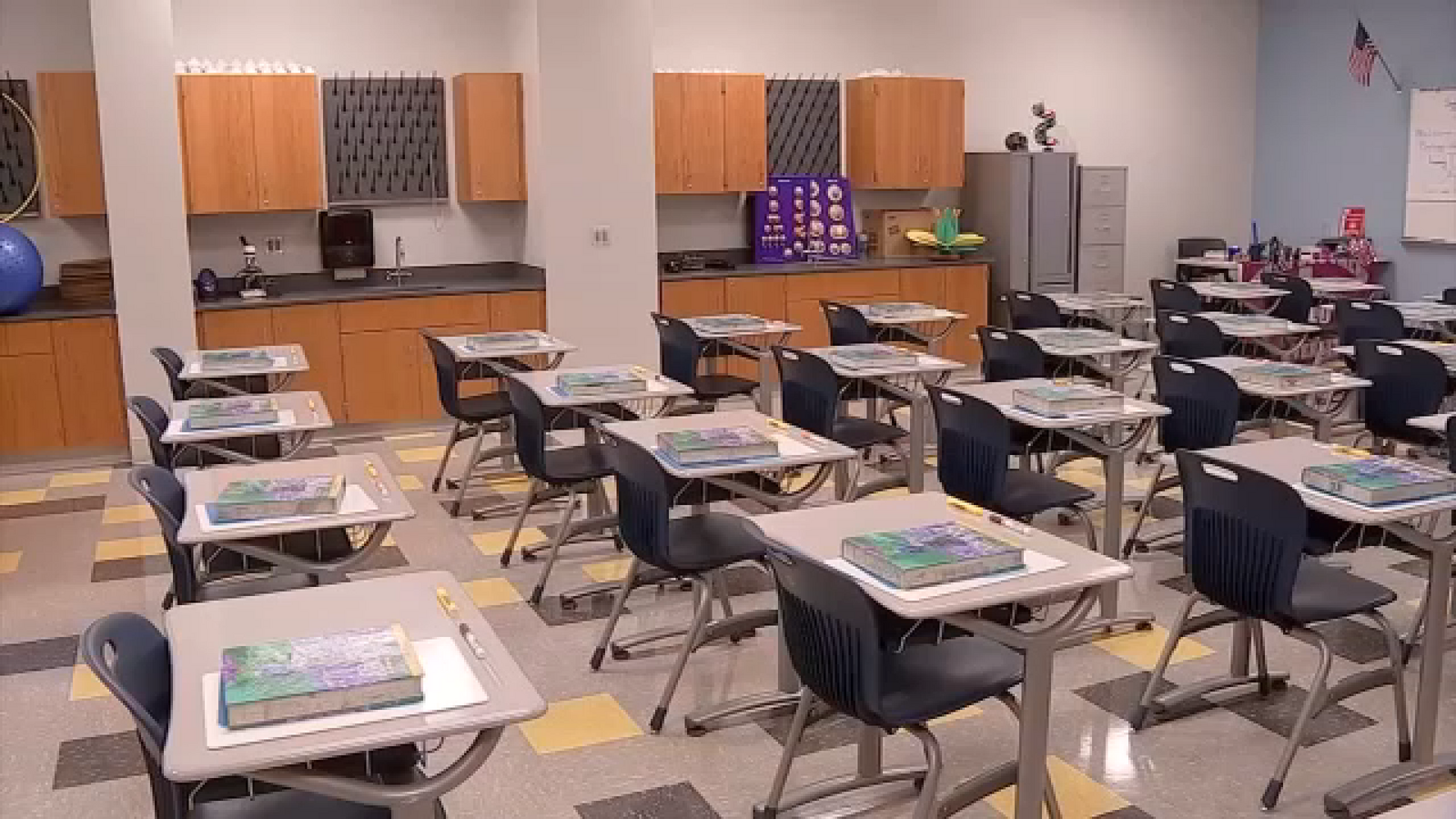ABC13 obtains exclusive HISD student enrollment records for 2025-26 school year – ABC13 Houston

Report on Houston Independent School District Enrollment Decline and Sustainable Development Goal Implications
Introduction and Executive Summary
This report analyzes the preliminary data on student enrollment for the Houston Independent School District (HISD). The data reveals a significant and accelerating decline in student numbers, exceeding previous projections. This trend poses a direct challenge to the achievement of several United Nations Sustainable Development Goals (SDGs), most notably SDG 4 (Quality Education), SDG 10 (Reduced Inequalities), and SDG 16 (Peace, Justice, and Strong Institutions). The financial repercussions of this decline threaten the district’s capacity to provide inclusive and equitable education for all students.
Analysis of Enrollment Trends
Current Enrollment Deficit
Preliminary data for the current school year indicates an enrollment decrease of 8,321 students, a figure larger than the 6,700 student decline projected by the district. This reduction has immediate and substantial financial consequences.
Historical and Projected Enrollment Data
The decline is part of a multi-year trend, demonstrating a consistent departure of students from the district. The data is as follows:
- 2021-22: 194,606 students
- 2022-23: 189,933 students
- 2023-24: 184,108 students
- 2024-25: 176,730 students
- 2025-26 (Projected): 168,409 students
Causal Factors and a Challenge to SDG 4: Quality Education
Primary Drivers of Student Departure
The exodus of students from HISD is attributed to several factors. A primary concern for the fulfillment of SDG 4, which aims to ensure inclusive and equitable quality education, is the notable increase in departures for alternative schooling options.
- Shift to Private and Homeschooling: Over the last two school years, 2,762 students have left HISD for private schools within Texas or for homeschooling. This represents a 40% increase compared to the preceding two-year period. This trend suggests a potential decline in public confidence in the district’s ability to provide quality education.
- Impending Policy Changes: The anticipated introduction of a state-level school voucher program is expected to exacerbate this trend, potentially diverting public funds to private institutions and further weakening the public education system.
- Other Factors: Student graduation and transfers for unknown reasons also contribute to the overall decline.
Implications for Educational Equity (SDG 10)
The movement towards private education raises concerns related to SDG 10 (Reduced Inequalities). As families with the necessary resources opt out of the public system, HISD may face an increasing concentration of students with higher needs and fewer resources. This risks creating a two-tiered educational system that deepens societal inequalities rather than mitigating them.
Financial and Institutional Impact
Funding and Revenue Loss
State funding for school districts is directly linked to student enrollment and average daily attendance. The departure of 8,321 students translates into a significant loss of public funds.
- Per-Student Allotment: $6,160
- Total Annual Revenue Loss: Over $51 million
Threat to Institutional Stability (SDG 16)
A revenue loss of this magnitude directly impacts the district’s operational capacity and its role as a strong public institution, a key target of SDG 16. This financial strain threatens the district’s ability to:
- Build and upgrade education facilities to be safe and inclusive (SDG Target 4.a).
- Recruit and retain qualified teachers.
- Provide essential learning resources and support services.
The erosion of financial stability weakens the public education system, a cornerstone institution for a just and sustainable society. This creates a negative feedback loop where reduced funding leads to a decline in educational quality, prompting further student departures and deeper financial crises.
Analysis of Sustainable Development Goals (SDGs)
1. Which SDGs are addressed or connected to the issues highlighted in the article?
-
SDG 4: Quality Education
This is the primary SDG addressed in the article. The entire text revolves around the public education system, specifically the Houston Independent School District (HISD). It discusses critical issues such as declining student enrollment, the shift of students to private and homeschooling, and the direct financial consequences for the public school district. These factors directly impact the accessibility, equity, and sustainability of quality education for children in the district.
-
SDG 10: Reduced Inequalities
While not the main focus, this goal is implicitly connected. The article highlights a significant loss of funding for the public school system due to declining enrollment (“more than $51 million in revenue HISD won’t receive”). Public schools are a crucial service for ensuring equal opportunities. A weakened and underfunded public system can exacerbate inequalities, as families with financial means can opt for private education, while those without are left in a public system with diminishing resources. The introduction of school vouchers is mentioned as a factor that could further this trend.
2. What specific targets under those SDGs can be identified based on the article’s content?
-
Target 4.1: Ensure that all girls and boys complete free, equitable and quality primary and secondary education.
The article directly relates to this target by highlighting challenges to the public (“free”) education system. The continuous drop in enrollment (“8,321 fewer students enrolled at HISD this year”) and the shift to private schools suggest a potential erosion of confidence in the quality or provision of public education. This trend threatens the goal of ensuring a robust, equitable system for all children, as the financial base that supports it is shrinking.
-
Target 4.a: Build and upgrade education facilities and provide safe, inclusive and effective learning environments for all.
This target is implicated by the financial crisis described in the article. The loss of over $51 million in revenue directly impacts the district’s budget. Such a significant funding cut would logically constrain the district’s ability to maintain, upgrade, and invest in its facilities and learning environments. A reduction in resources can lead to larger class sizes, fewer support staff, and deferred maintenance, all of which compromise the quality and effectiveness of the learning environment for the remaining students.
3. Are there any indicators mentioned or implied in the article that can be used to measure progress towards the identified targets?
-
Indicator: Student enrollment figures in public education.
The article provides precise, year-over-year data on student enrollment, which serves as a direct indicator of participation in the public education system. The data shows a clear trend: “2021-22: 194,606 students,” “2022-23: 189,933 students,” “2023-24: 184,108 students,” and “2024-25: 176,730 students.” This declining trend is a key metric for assessing the health and reach of the public school system.
-
Indicator: Rate of student transfer from public to private/homeschooling.
The article quantifies the movement of students away from the public system. It states, “2,762 students left HISD for private schools within Texas or for homeschooling. That’s a 40% increase when compared to the two years before.” This indicator measures the flow of students out of the public system and can be used to gauge public perception and the competitive pressures on public schools.
-
Indicator: Public expenditure on education per student.
The article explicitly mentions the state’s funding formula, providing a clear financial indicator: “a per-student allotment of $6,160.” This figure is crucial for understanding the level of financial resources dedicated to each student’s education within the public system.
-
Indicator: Total revenue loss due to enrollment changes.
The financial impact is calculated and presented as a key indicator of the consequences of declining enrollment. The article states that the drop in students “breaks down to more than $51 million in revenue HISD won’t receive.” This indicator measures the direct financial strain on the school district’s ability to provide quality education and maintain effective learning environments.
4. Summary Table of SDGs, Targets, and Indicators
| SDGs, Targets and Indicators | ||
|---|---|---|
| SDGs | Targets | Indicators |
| SDG 4: Quality Education | 4.1: Ensure that all girls and boys complete free, equitable and quality primary and secondary education. |
|
| 4.a: Build and upgrade education facilities and provide safe, inclusive and effective learning environments for all. |
|
|
| SDG 10: Reduced Inequalities | (Implicit) Relates to ensuring equal access to public services like education. |
|
Source: abc13.com
What is Your Reaction?
 Like
0
Like
0
 Dislike
0
Dislike
0
 Love
0
Love
0
 Funny
0
Funny
0
 Angry
0
Angry
0
 Sad
0
Sad
0
 Wow
0
Wow
0




















































.jpg.webp?itok=0ZsAnae9#)



























